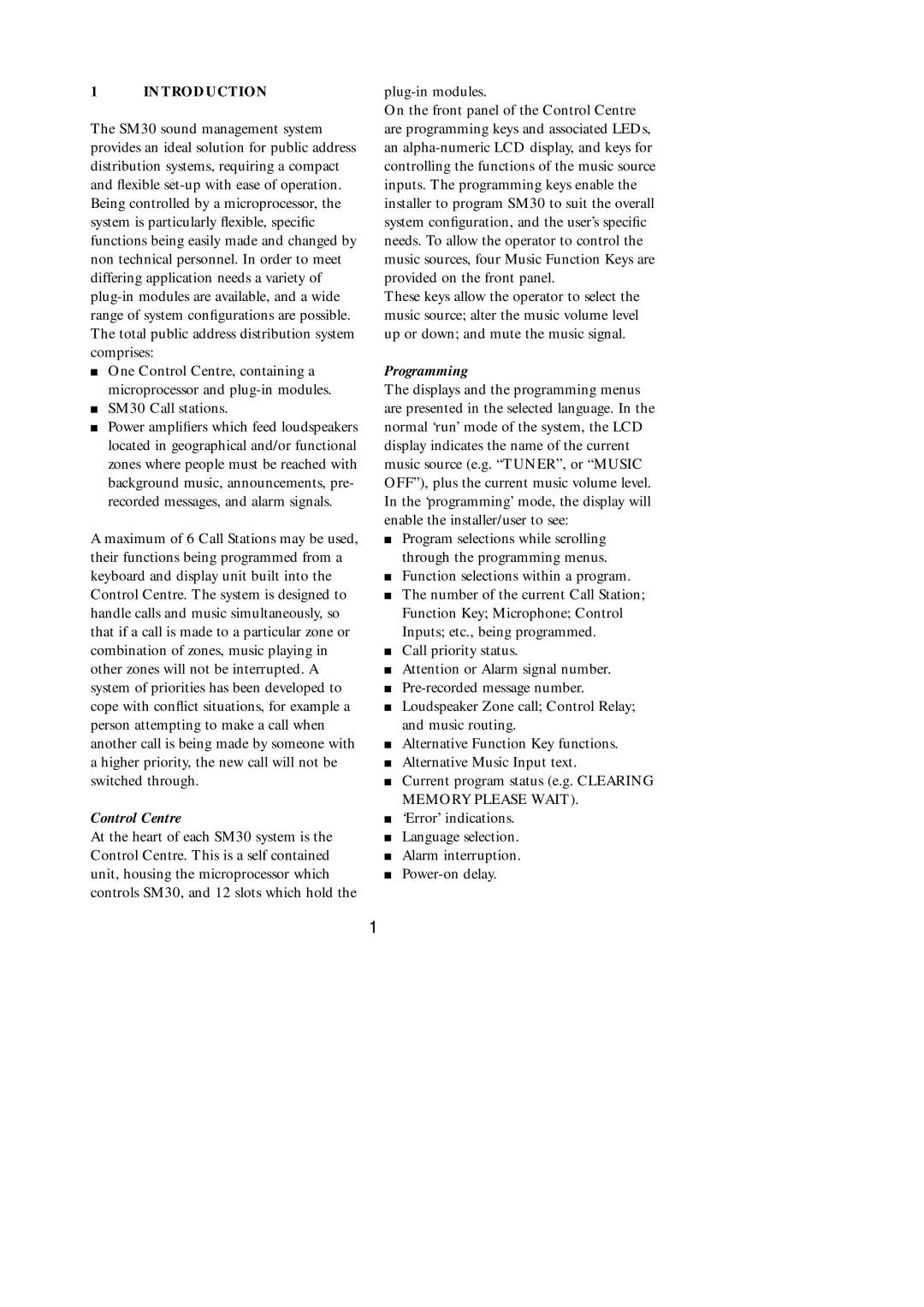
1 INTRODUCTION
The SM30 sound management system provides an ideal solution for public address distribution systems, requiring a compact and flexible
■One Control Centre, containing a microprocessor and
■SM30 Call stations.
■Power amplifiers which feed loudspeakers located in geographical and/or functional zones where people must be reached with background music, announcements, pre- recorded messages, and alarm signals.
A maximum of 6 Call Stations may be used, their functions being programmed from a keyboard and display unit built into the Control Centre. The system is designed to handle calls and music simultaneously, so that if a call is made to a particular zone or combination of zones, music playing in other zones will not be interrupted. A system of priorities has been developed to cope with conflict situations, for example a person attempting to make a call when another call is being made by someone with a higher priority, the new call will not be switched through.
Control Centre
At the heart of each SM30 system is the Control Centre. This is a self contained unit, housing the microprocessor which controls SM30, and 12 slots which hold the
On the front panel of the Control Centre are programming keys and associated LEDs, an
These keys allow the operator to select the music source; alter the music volume level up or down; and mute the music signal.
Programming
The displays and the programming menus are presented in the selected language. In the normal ‘run’ mode of the system, the LCD display indicates the name of the current music source (e.g. “TUNER”, or “MUSIC OFF”), plus the current music volume level. In the ‘programming’ mode, the display will enable the installer/user to see:
■Program selections while scrolling through the programming menus.
■Function selections within a program.
■The number of the current Call Station; Function Key; Microphone; Control Inputs; etc., being programmed.
■Call priority status.
■Attention or Alarm signal number.
■
■Loudspeaker Zone call; Control Relay; and music routing.
■Alternative Function Key functions.
■Alternative Music Input text.
■Current program status (e.g. CLEARING MEMORY PLEASE WAIT).
■‘Error’ indications.
■Language selection.
■Alarm interruption.
■
1
